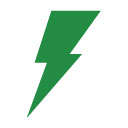Spotlight: Customizing Statements
October 2021 Tags: Statements, Tabs3 Billing
Did you know that Tabs3 Billing provides several ways to customize your statements?
Statement Designer
Statement Designer lets you create customized layouts for your Tabs3 Billing statements. You can control the placement of various fields from the Tabs3 Client data file, and add customized text, images and other layout elements to the statement. Once a page layout has been designed, it can be applied to one or more statement templates. In the Quick Launch, search for and select “Statement Designer.”
Statement Customization
Statement Customization allows you to define terminology and formatting options used for all billing statements. Optionally enter heading information that can be printed at the top of the first page of the statement (the statement heading) or at the end of the statement. Optionally adjust terminology, such as column headings. Changes made to statement customization affect all clients. In the Quick Launch, search for and select “Statement Customization.”
Statement Templates
The Statement Templates window allows you to define statement templates. A statement template consists of the many formatting options used for a particular style of statement. The same statement template can be used for multiple clients. Changes made to a statement template affect all clients who use that template. There is no limit to the number of statement templates that can be defined. In the Quick Launch, search for and select “Statement Templates.”
Statement Notes
The Statement Notes program is used to create messages that can print on a client’s statement, cover statement or both. Statement notes created in the statement notes file can be designated as a beginning statement note or an ending statement note in a statement template. Each note can be used by any number of statement templates. In the Quick Launch, search for and select “Statement Notes.”
For detailed information on customizing your statements, check out the Statement Formatting Guide.
Related posts:
Comments are closed.
Recent Comments
- Tabs3 Software on Feature Article: Tabs3 Cloud
- Betty Pinto on Feature Article: Tabs3 Cloud
- Josephine Banaszek on Quick Tip: Application Toolbar
- Christina Weaver on Quick Tip: Use F5 to Insert Time, Date, and User ID
- James Hunter on Spotlight: Reorder Fees


